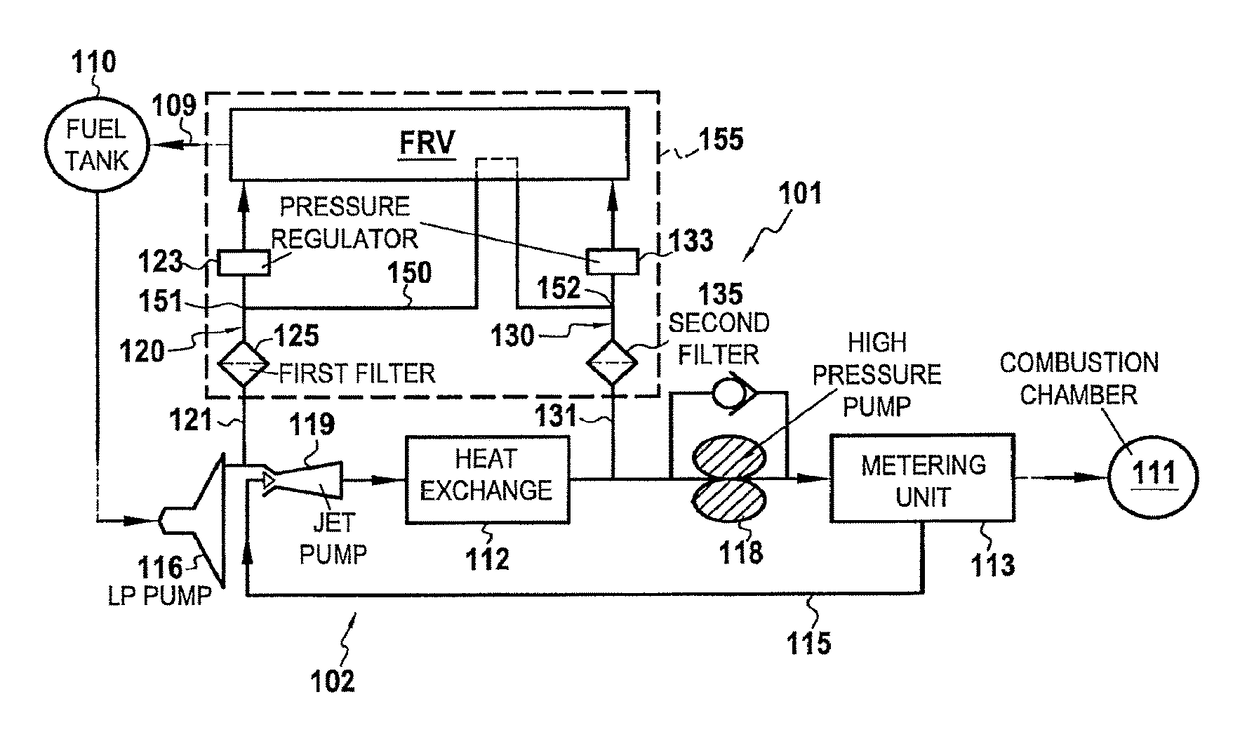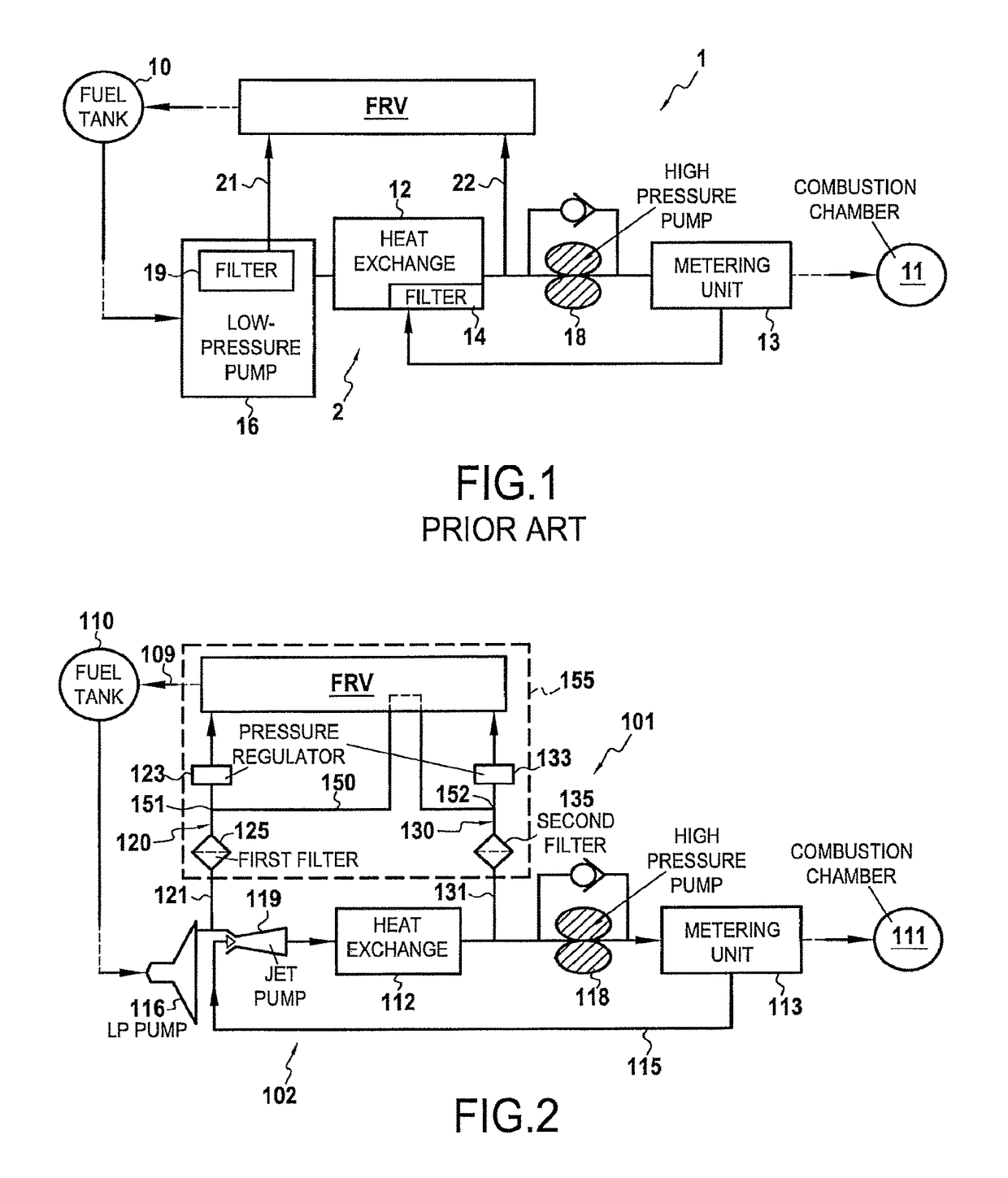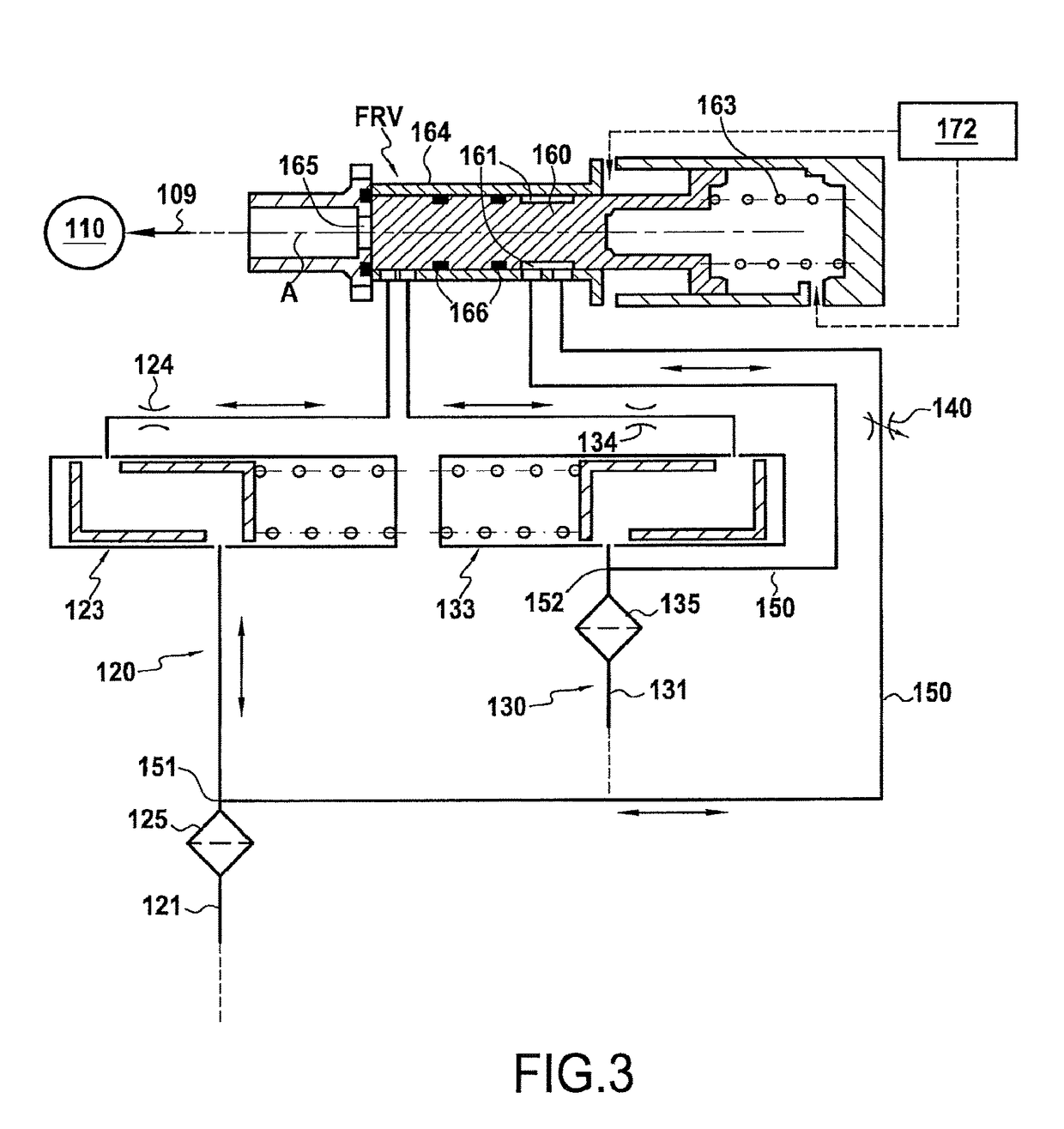Fuel circuit of a turbine engine
a turbine engine and fuel circuit technology, applied in the direction of turbine/propulsion fuel valves, efficient propulsion technologies, machines/engines, etc., to achieve the effects of simple, compact, and limited weight, and simplify the design and fabrication of elements of the main circui
- Summary
- Abstract
- Description
- Claims
- Application Information
AI Technical Summary
Benefits of technology
Problems solved by technology
Method used
Image
Examples
Embodiment Construction
)
[0042]Embodiments are described in detail below, with reference to the accompanying drawings. These examples show the characteristics and the advantages of the invention. Nevertheless, it should be recalled that the invention is not limited to these examples.
[0043]FIG. 1 shows a prior art example of an airplane turbine engine fuel circuit. This prior art circuit is described above.
[0044]FIG. 2 shows a fuel circuit 101 for a turbine engine, more particularly for an airplane turbojet. The circuit 101 comprises a main circuit 102 extending between the fuel tank 110 of the airplane and the combustion chamber 111 of the turbojet.
[0045]Going from upstream to downstream, the main circuit 102 comprises: a low-pressure pump (or LP pump) 116 connected to the tank 110; a jet pump 119; a heat exchanger 112; a high-pressure pump (or HP pump) 118; and a metering unit 113 for feeding fuel to the combustion chamber 111. A filter (not shown) may be provided between the HP pump 118 and the metering ...
PUM
 Login to View More
Login to View More Abstract
Description
Claims
Application Information
 Login to View More
Login to View More - R&D
- Intellectual Property
- Life Sciences
- Materials
- Tech Scout
- Unparalleled Data Quality
- Higher Quality Content
- 60% Fewer Hallucinations
Browse by: Latest US Patents, China's latest patents, Technical Efficacy Thesaurus, Application Domain, Technology Topic, Popular Technical Reports.
© 2025 PatSnap. All rights reserved.Legal|Privacy policy|Modern Slavery Act Transparency Statement|Sitemap|About US| Contact US: help@patsnap.com



